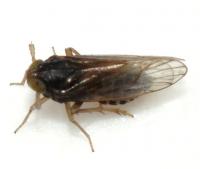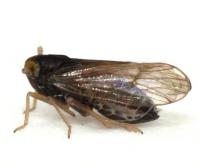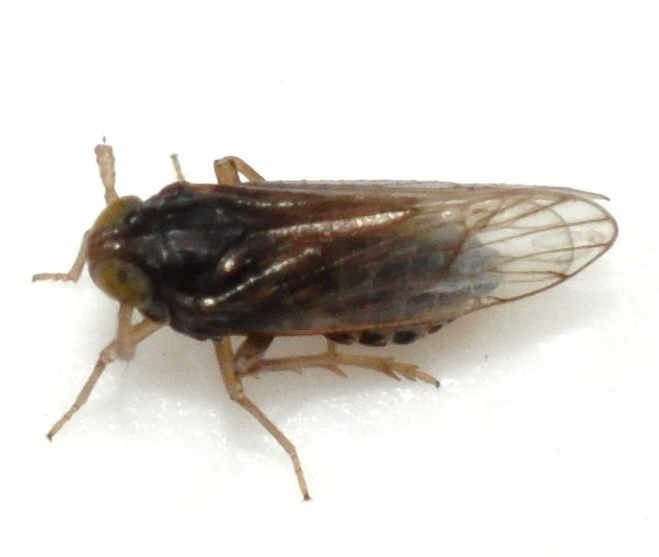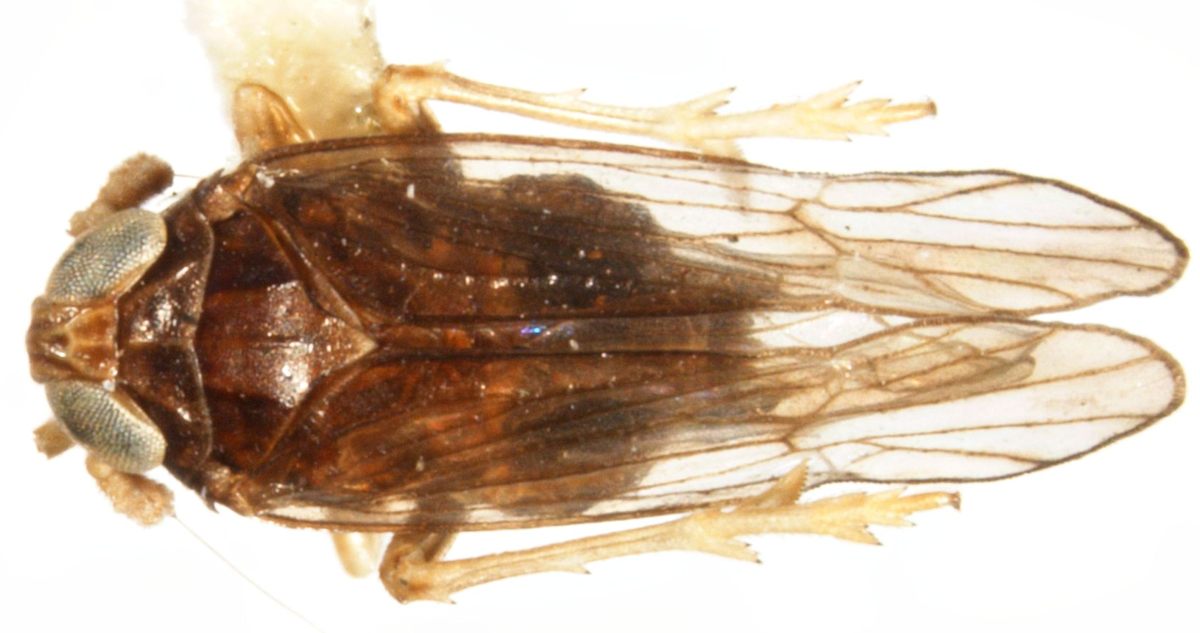
|
|
|
| synonym |
Delphacodes sagae |
| description |
A very dark species, characteristic of members of this genus. Falcotoya tend to have prominent carinae (ridges) on the thorax and head, while the aedeagus is strongly downcurved (UDEL). The key characteristic for this species that can separate it from other similarly dark Delphacids is the light, non-dark first antennal segment; the first antennal segment is concolorous with the other segments. The legs are also pale, contrasting with the blackish body. The wings can have a brownish tint to them as well.
|
| distribution |
Eastern United States and Ontario; C. Bartlett notes that this species is "uncommon at best, if not outright rare" (pers. comment). (UDEL) |
| abundance |
Rare, recorded from a single county in the Piedmont. |
| seasonal_occurrence | |
| habitat |
Has been found in grassy, field-type habitat |
| plant associates |
Unknown, likely sedge or grass |
| behavior |
|
| comments |
The only member of this genus found in the United States. This species was until recently referred to as Delphacodes sagae and therefore closely resembles species in that genus. |
status |
[Native:]
[Introduced:]
[Extirpated:] | | list_type |
[Official:]
[Provisional:] |
| adult_id | Unmistakable and widely known Identifiable from good quality photos of unworn specimens
Identifiable from photos showing undersides, or other specialized views [e.g., legs, face]
Identifiable only by close inspection of structural features or by DNA analysis NULL |
| nymph_id | Unmistakable and widely known Identifiable from good quality photos, especially where associated with known host plants
Identifiable from close inspection of specimens or by DNA analysis
Identifiable only through rearing to adulthood NULL |
| G_rank |
|
| S_rank |
|
| rank_comments |
|
| tribe |
Delphacini |
| subgenus |
|
Species Photo Gallery for Falcotoya sagae No Common Name |
 | Photo by: Kyle Kittelberger, Brian Bockhahn, Paul Scharf
Vance Co.
Comment: grassy, field-type habitat and mixed forest edge; female. An uncommon to rare species, maybe first for NC. Note dark color and non-dark first antennal segment |  | Photo by: Kyle Kittelberger, Brian Bockhahn, Paul Scharf
Vance Co.
Comment: grassy, field-type habitat and mixed forest edge; female. An uncommon to rare species, maybe first for NC. Note dark color and non-dark first antennal segment |
|

 »
»


